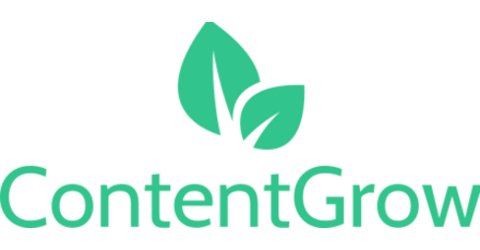The 20% of content work AI can't touch: A strategist's framework
Jake Rundell shares his framework for identifying the critical 20% of content work that requires human strategy, from EU compliance to brand consistency at scale.

Jake Rundell has built his career at the intersection of storytelling and technology, scaling content operations at both PlaytestCloud (a mobile game user research platform) and ecoligo while maintaining the strategic thinking that separates effective marketing from mere content generation.
As Content Marketing Manager at ecoligo, he leads content strategy for the Berlin-based solar-as-a-service company that has implemented over 130 solar projects across 11 emerging markets. Working with a lean team across multiple regions, Jake has developed frameworks for scaling content production while maintaining strategic oversight—exactly the challenge facing many B2B marketing leaders today.
In this interview, Jake discusses his evolution from AI skeptic to strategic adopter, shares his current content tech stack, and explains why European marketers face unique challenges in the AI era.
Short on time?
Here’s a table of contents for quick access:
- A curated AI stack that prioritizes brand consistency over novelty
- Where human creativity still dominates
- Building sustainable workflows around AI limitations
- The European AI compliance challenge
- The 80/20 rule for AI success
A curated AI stack that prioritizes brand consistency over novelty
Jake's AI journey began in 2022 at PlaytestCloud, but what made it successful wasn't the technology itself. "What stood out to me was how quickly and confidently our leadership embraced AI from the start," Jake explains. "They made it clear that these tools were not here to replace us, either then or in the future. That message really resonated with me and made me feel much more open to exploring AI in my daily work."
His early experiments focused on practical applications rather than revolutionary changes. Jake treated AI "almost like a freelance copywriter, someone who could give us a solid first draft" for sales materials, whitepapers, and help center articles. The key insight: "It was never a 'set it and forget it' approach. It always required human editing, contextual knowledge, and strategic thinking to bring the content home."
Rather than chasing the latest AI tools, Jake has built a focused tech stack around three core platforms, each serving specific strategic functions—an approach particularly valuable for resource-conscious teams managing multiple markets and languages.
For writing tasks, his team relies on JasperAI, particularly for its brand consistency features. "One of the main reasons is the way it supports brand consistency at scale," Jake notes. "Features like 'Company Knowledge,' brand voice settings, and audience profiles help ensure that everything we produce stays on-brand and aligned with our messaging." This focus on brand coherence becomes especially valuable as ecoligo expands internationally, with Jasper's multilingual support helping develop messaging across over 25 languages.
Jake uses Canva AI not to replace his design team, but to enhance collaboration. "I still regularly rely on Canva to sketch out first drafts of visual content. This helps me prepare focused, well-structured briefs that include draft layouts, copy, and key data points. That way, Molly (our designer) can focus purely on elevating the final design, rather than figuring out what the content needs to say."
For ideation and problem-solving, ChatGPT serves as Jake's creative catalyst. "One of the hardest parts of any project is what I call the 'blank page phase,'" he explains. "Has ChatGPT ever given me the exact idea I end up using? Honestly, no. Most suggestions aren't usable as-is. But the volume and variety of ideas it generates help me unlock better ones, which I then shape into something original and strategic."
This mirrors broader industry patterns, where over half (55.05%) of marketers recognize AI's capability to massively scale content creation, but successful implementation requires human curation and strategic direction.

Where human creativity still dominates
Jake maintains clear boundaries between AI assistance and human creativity, particularly in video production and strategic messaging. While he leverages AI for script drafts and timing estimates, he emphasizes that "when it comes to the visual style, emotional impact, pacing, and the core creative concept, human input is still crucial."
His background in film production gives him unique perspective on AI's role in video content. Jake highlights emerging capabilities like Generative Extend in Premiere Pro, which "lets you seamlessly add missing frames or room tone," and AI search tools that can analyze footage for objects and spoken words. These features handle time-consuming technical tasks while preserving creative control.
The strategic principle underlying Jake's approach aligns with industry data showing that nearly 80% of marketers highlight AI's role in streamlining processes and boosting productivity, but the most successful implementations focus AI on operational efficiency rather than creative decision-making.
"To me, AI is best seen as a fast assistant," Jake explains. "It helps you get from a blank page to a usable first version, which is especially valuable when you're up against deadlines. But if you want content that performs, feels intentional, and reflects your company's voice, it still takes a human to get it across the finish line."
Building sustainable workflows around AI limitations

The biggest challenge Jake identifies with AI tools reflects a common industry problem: outputs that appear polished but lack substance. "The copy may read smoothly and confidently, but when you look closer, it's often vague, repetitive, or even factually incorrect. That's a risky combination, especially in content marketing where clarity, originality, and authority are essential."
His solution involves treating AI as a collaborator rather than a content creator, with structured workflows that account for the technology's limitations. Jake has developed prompt templates and brand-specific input blocks to guide tools toward more aligned outputs, while always applying "a human layer of editing, strategic thinking, and quality control."
This systematic approach has become more critical as Jake's role has evolved from hands-on content creation to strategic oversight. At ecoligo, he focuses more on internal reports, campaign messaging, and high-level strategy, but the quality control principles remain constant.
The European AI compliance challenge
Jake raises an issue that many content marketers overlook: the growing tension between AI capabilities and European regulatory requirements. "Much of today's most advanced tech, including leading AI tools, is developed and hosted outside of the European Union. This presents a number of challenges when it comes to compliance with EU-specific frameworks like the GDPR, the Digital Services Act, and upcoming AI regulations."
For European marketing teams, this creates a strategic dilemma. "Some of the most popular platforms simply aren't built with European privacy standards in mind. This can leave marketing teams in a vulnerable position, forced to choose between using best-in-class tools or staying strictly compliant."
For a content manager working across multiple regions like Jake, this means constant evaluation of tool choice and data flow. Each platform in his stack requires assessment not just for functionality, but for compliance with varying international standards. "As a content marketer based in the EU, I've become increasingly mindful of the tools I adopt and how data flows through them," Jake explains.
Jake advocates for a stronger European AI ecosystem, suggesting "incentives for businesses that choose EU-based solutions, direct investment in startups working on privacy-conscious AI, and legislation that encourages public institutions to prioritize European tech providers." He frames this not just as a compliance issue, but as essential for long-term competitiveness: "Building a strong digital sovereignty strategy is not just about protecting data, it's also about long-term competitiveness and resilience."

The 80/20 rule for AI success
Throughout his AI adoption journey, Jake has maintained a consistent framework: "I still hold to the belief that AI can get you 80 percent of the way there, but the final 20 percent, the nuance, insight, and creative edge, still needs to come from a human. In many ways, that is where the real marketing magic happens."
This principle aligns with broader industry trends showing that while 25.6% of marketers report that AI-generated content is more successful than content created without AI, the most effective implementations combine AI efficiency with human strategic thinking.
For lean marketing teams considering their own AI adoption, Jake's experience offers a practical roadmap: focus on specific operational improvements rather than wholesale process replacement, maintain rigorous quality control, and remember that the goal isn't to eliminate human input but to redirect it toward higher-value strategic work.
As AI continues reshaping content marketing, success will belong to teams that understand both the technology's capabilities and its limitations, using it to amplify human creativity rather than replace it.




